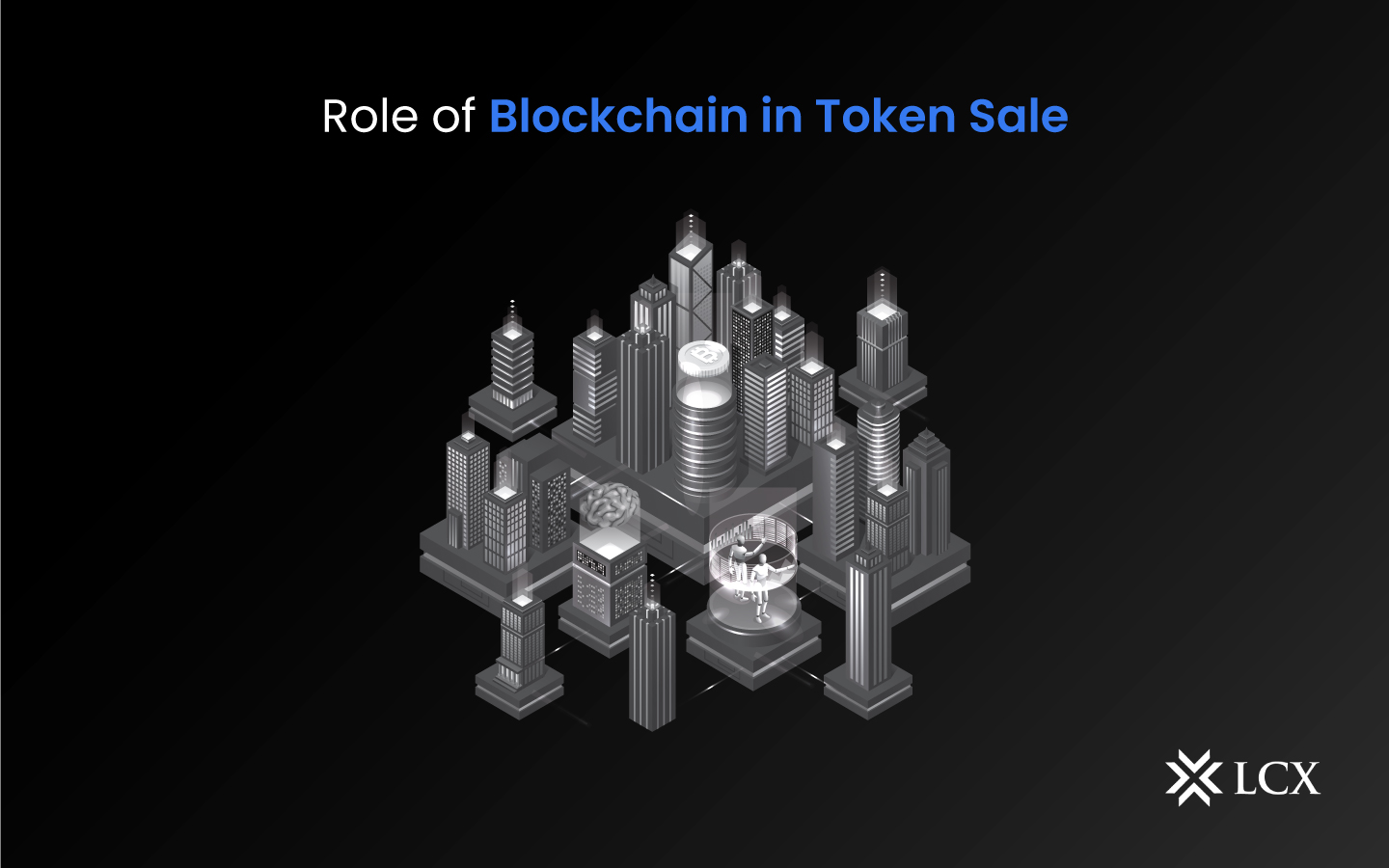5 Promising Blockchain Layer-1 Networks to Watch in 2023

[gpt3]rewrite
Disclaimer: The text below is an advertisement article that is not part of Cryptonews.com editorial content.

Most blockchain developers would agree that Ethereum remains the most popular and important Layer-1 network today, and that is certainly true in terms of the number of decentralized applications and cryptocurrencies it supports.
However, it is also true that a number of rival platforms have emerged to challenge Ethereum, offering more sophisticated features while improving on its most obvious shortcomings – its slow transaction speeds and high gas fees.
Ethereum’s inability to scale easily has resulted in a lot of interest in alternative Layer-1 blockchains, and many newer protocols have emerged to challenge it. These new blockchains are generally highly customized platforms with unique features and capabilities that enable them to support very specific use cases. More and more, it seems that there will not be one unified “king” of blockchain. Instead, blockchain is transforming into a world of highly specialized chains tailored for different industries. As a result, there are many extremely promising new Layer-1 networks that users need to be aware of, and in this article we’ll take a look at some of them.
Namada
Namada first introduced himself last year, announced its strong emphasis on transaction anonymity and security. It is first fractal instance of Anoma protocol. Anoma facilitates the operation of networked fractal instances, which communicate together but use varied state machines and security models. Anoma’s architecture is an attempt to build a platform that is architecturally homogeneous, but with a heterogeneous security model. Thus, different fractal instances can specialize in different tasks and serve different communities.
The goal of Namada is to satisfy both blockchain’s need for openness and transparency, and also secrecy for users. To do this, Namada has created a new feature known as “shielded actions” which cryptographically hides transactions. While the transaction itself is recorded in a public ledger and remains provable, the details are kept secret from prying eyes. It is an attempt to provide users with privacy without compromising the security of the blockchain.
With Namada, users can perform shielded transfers of all kinds of assets, including cryptocurrencies and non-fungible tokens, regardless of the platform they were created on, such as Ethereum or an IBC-compliant chain. Transfers are enabled by a trustless 2-way Ethereum bridge via the IBC implementation on ETH, making it possible to transfer ETH, DAI or an NFT from Ethereum to another chain, privately and with minimal latency and low fees.
Namada has had a lot of traction this year, especially partnership with Osmosis decentralized exchange on Cosmos to increase liquidity and market access. The partnership led to $NAM tokens being sent to $OSMO coin holders. In addition, Namada recently announced a cooperation with Zcash, the privacy-focused cryptocurrency. Like Zcash, Namada uses zero-knowledge proofs (ZK-proofs), a cryptographic technique that allows transactions to be verified without revealing the sender, receiver or transaction amount. Later this year, it will release $NAM to $ZEC token holders as part of its retroactive public goods financing program. The purpose is to give back to specific projects and communities that have contributed to Namada’s technology.
Most recently the Anoma Foundation which oversees both Anoma and Namada raised $25 million in its third major funding round, led by CMCC Global. These funds will be used to strengthen the development of Anoma’s architecture and increase ecosystem development, which means that a good portion of the money should also be used to increase Namada.
Namada has stated that it intends to collaborate with other blockchain projects to improve its secrecy-focused architecture. Ultimately, it believes in a world where the technology will become ubiquitous, giving users the ability to remain completely anonymous while conducting secure transactions.
Astar network
Founded in 2020 by blockchain developer Sota Watanabe, Astar network has emerged as one of the most widely used smart contract platforms in Japan. It supports both EVM and WebAssembly environments with interoperability enabled by a cross-virtual machine. The popularity of Astar Network stems from its consensus mechanism, which is designed to support dApp developers on the network.
It does this through dApp staking, which allows network users to support their favorite projects instead of staking to secure the network. It is an elaborate system designed to grow the network by rewarding both builders and participants. Other blockchains, such as Bitcoin and Ethereum, only assign transaction fees to miners and validators, while developers are forced to pay gas fees to deploy dApps. That is not the case with Astar, which splits each block reward into two parts, with 50% going to block validators and the other 50% going to dApp developers.
Astar refers to this dApp staking system as a “Build2Earn model,” with developers earning rewards based on the amount of tokens users have staked on dApps. In this way, the developers of the most popular dApps earn greater rewards than the less popular ones, ensuring that the network is incentivized in a balanced and fair way.
In recent months, Astar has made great progress by partnering with two of Japan’s largest companies, Toyota and Sony. Toyota announced in February that it will sponsor a Web3 hackathon at Astar, with developers tasked with building a decentralized autonomous organization within the company, or DAO, to enable more efficient decision-making for Toyota’s management.
Astar’s partnership with Sony was launched a Web3 incubation program for projects focusing on NFTs and DAOs. Sony said its aim is to explore how blockchain can solve various problems within the industries it operates in, and will consider investing in the best projects that come out of this initiative.
Camino network
There has been much talk in the blockchain industry about the need for “industry-specific” chains that are tailored to handle highly specialized applications, and that is precisely the focus of Camino network.
The creator Chain4Travel has created a public and permissioned Web3 blockchain designed to support the global travel industry. It hopes to usher in a new era of decentralized travel-related products, services and applications.
Camino is the first and only L1 blockchain designed to specifically cater to the travel industry and is operated, maintained and governed by travel industry participants. The basic idea is that it will allow tourism players to innovate for themselves, instead of relying on tech giants like Google and Booking.com.
It is built on top of a complex blockchain architecture consisting of three chains – Exchange Chain (X-Chain), Platform Chain (P-Chain) and Contract Chain (C-Chain) – with all three validated and secured by their primary network. The X-Chain is a decentralized network for creating and trading digital assets, which can represent real-world assets as equity, while the P-Chain is a metadata blockchain that coordinates validators and enables the creation of subnets. Finally, the C chain allows users to create smart contracts for dApps.
The Camino Network has been a work in progress for a while, and earlier this year it finally came to fruition launch of the main network, supported by a number of major industry brands including Lufthansa, Eurowings, Hahn Air, TUI, DER Touristik and Sunnycars. In all, the Camino Network is supported by more than 80 major tourism players, and with such strong support behind it, we can expect to see many new developments in the coming months.
EOS
EOS may not be a “new” blockchain, but it’s enjoying a new lease of life in 2023. Veteran crypto users will remember EOS as the blockchain that raised $4.2 million in an ICO back in 2018, only to fail to build. on that. The EOS network was touted to be faster and more scalable than Ethereum or any other blockchain for that matter, but development quickly stalled.
Block.one, formerly the main developer of EOS, basically took the ICO money and ran, failing to develop the project further. It caused one revolution of EOS investorswhich eventually created a new organization called EOS Network Foundation and took control of the network. Since it happened at the end of 2021, ENF has started working on promoting EOS, firmly believing that it can still live up to its potential.
EOS is designed to support the development of dApps, which in many ways are similar to Ethereum. In particular, dApp development is easier on EOS because it provides an operating system-like set of features and services that dApps can easily use.
With ENF CEO Yves La Rose now at the helm, the project has made strong progress this year. In April it announced beta launch of the Ethereum Virtual Machine network to increase interoperability between EOS and Ethereum. EOS EVM is distributed on the EOS blockchain as a smart contract and written in Solidity, providing various tools, resources and open source libraries for developers. It is designed to enhance Ethereum by bridging the two networks. With it, developers can use the vast resources of Ethereum to build dApps, while taking advantage of EOS’s one-second block interval speeds and support for 800 exchanges per second.
At the same time, EOS announced an alliance with market maker DWF Labs, which will invest 60 million dollars in the project. Under the deal, DWF will purchase $45 million in EOS tokens and pump an additional $15 million into EOS-based projects.
In a further sign of progress, EOS announced in April the release of Antelope Leap 4an upgraded software kit, which can be used to improve node synchronization between EOS and Antelope, Telos, UX Network and WAX, the main networks of the Antelope ecosystem.
Sui network
One of the most exciting Layer-1s for DeFi developers is Sui networkwhich is designed to support a wider network of cryptocurrency tokens and dApps, similar to Ethereum.
What excites developers about Sui is the promise of instant transaction completion, along with the rollout of low-latency smart contracts and incredibly fast overall transaction speeds. Sui achieves this by using Move, a programming language based on Rust. Move, which is also used by rival networks such as Aptos, is designed to make smart contract development easier. Move was originally created by the team building Facebook’s now-defunct Diem blockchain.
With Sui’s proof-of-stake consensus algorithm, validators replace the miners used in Bitcoin’s blockchain. Users can stake $SUI tokens to validate the transaction in return for rewards. However, what sets Sui apart is that it enables parallel processing of transactions to increase throughput, reduce latency and improve scalability. It’s a system that Sui says will better support applications like gaming and retail payments that need to be highly scalable.
Sui is now ready for prime time afterwards launching Sui Network’s mainnet in March. “Today is a monumental milestone for the entire Sui community and the digital asset ecosystem as a whole,” Sui Foundation CEO Greg Siourounis said of the launch. “For the first time, builders and users have access to a Layer 1 blockchain that allows developers to build freely, unhindered by complex infrastructure, unlocking endless possibilities for users worldwide.”
On June 1, Sui Network announced that it has beaten one multi-year collaboration with the Red Bull Formula 1 racing team, just weeks after the launch of the main grid. Sui has been named Red Bull’s “Official Blockchain Partner” and intends to work with the team to demonstrate how Web3 can better enable human connections through “digital immersive experiences” for racing fans.
[gpt3]
























